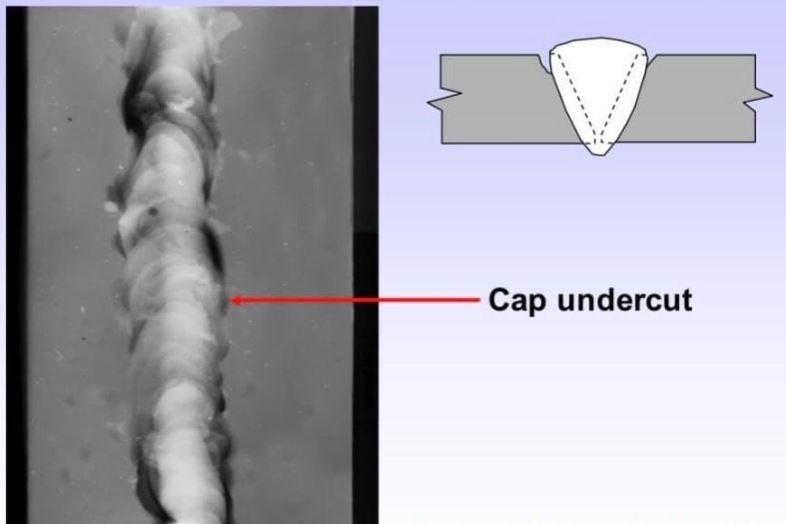A Comprehensive Overview to Identifying, Averting, and Mending Undercut Welding Troubles in Your Welding Projects
In the world of welding, coming across undercut issues is a typical obstacle that can endanger the structural honesty and overall top quality of your welding projects. Understanding the source behind undercut welding, having the ability to precisely identify it in your welds, and implementing effective preventative actions are essential abilities for any kind of welder. In addition, having the knowledge and strategies to fix undercut problems when they do happen can make a substantial difference in the last result of your welding ventures. Remain tuned as we discover the essential elements of recognizing, stopping, and repairing undercut welding problems, offering you with valuable understandings and methods to boost your welding abilities to the next level.
Typical Sources Of Undercut Welding
Undercut welding, a typical problem in welding procedures, can be created by different factors that require to be meticulously determined and addressed to make certain the stability of the weld joint. One of the main reasons of undercut welding is extreme warmth input.
An additional common source of undercut welding is improper welding method. Inadequate adjustment of the soldering iron or weapon, incorrect angle or range in between the torch and the work surface, or inconsistent travel rate can all add to the formation of undercut. In addition, using the incorrect welding consumables or electrode dimension for a particular joint configuration can bring about undercut problems. Determining these source and applying corrective procedures is essential in protecting against and correcting undercut welding issues in welding tasks.
Identifying Undercut in Welds

To determine undercut accurately, proper lighting and zoom tools are vital to check the weld joint extensively. Using devices such as a welding scale or a magnifying glass can assist in detecting even the smallest undercut blemishes. In addition, running a finger or a fingernail along the weld joint can sometimes expose undercut, as the surface might really feel uneven or have a dip where the undercut exists.
Safety Nets for Undercut
Having a deep understanding of the causes of undercut in welds allows for the application of effective preventative procedures to preserve weld quality and honesty. These settings need to be optimized to avoid too much warm input, which can check this site out lead to undercut development.

Strategies for Dealing With Undercut

Enhancing the welding present or lowering the traveling rate can assist fill up in the undercut. In addition, transforming the welding method from a push to a drag or vice versa can likewise assist lessen undercut.
One more technique is to make use of a weaving movement while welding to ensure correct sidewall combination and fill in the undercut. By oscillating the welding arc from side to side within the weld joint, the welder can deposit a lot more filler material into the undercut areas, effectively removing the problem.
In addition, grinding out the undercut and rewelding the joint can be a sensible solution for extra serious undercut issues - Preventing weld undercut. This procedure includes removing the undercut area, preparing the base metal, and after that rewelding the joint with appropriate welding parameters and strategies to stop undercut from persisting

Professional Tips for Preventing Undercut
Using appropriate welding methods and preserving control investigate this site over essential welding parameters are essential methods for welders aiming to avoid undercut in their weld joints. One expert pointer for preventing undercut is to make certain appropriate joint preparation. This entails cleansing the base metal extensively to remove any kind of pollutants that could lead to undercut development. Furthermore, selecting the proper welding procedure and filler metal for the details application can aid stop undercut. Welders must also pay attention to the welding present and voltage settings, ensuring they are within the recommended array to prevent getting too hot and potential undercut. Maintaining a consistent travel rate throughout the welding procedure is another vital idea to avoid undercut. By moving at a constant speed, welders can ensure correct combination and lower the possibility of undercut development. Inspecting the weld bead after conclusion can assist recognize any indications of undercut very early on, allowing for prompt corrective action to be taken.
Final Thought
To conclude, identifying, stopping, and taking care of undercut welding issues in your welding jobs is critical for making certain long lasting and solid welds. Preventing weld undercut. By recognizing the typical reasons for undercut, being able to identify it in welds, applying safety nets, and using appropriate methods for repairing undercut, you can avoid possible problems and produce top notch welds. Complying with expert pointers for staying clear of undercut can assist you improve your welding abilities and create much better outcomes in your tasks
Undercut welding, a typical issue in welding processes, can be created by different elements that require to be carefully determined and addressed to make certain the stability of the weld joint. Additionally, running a finger or a fingernail along the weld joint can sometimes disclose undercut, as the surface might feel irregular or have a dip where the undercut exists.
Utilizing correct welding techniques and maintaining control over crucial welding parameters are critical techniques for welders intending to stop undercut in their weld joints.In conclusion, determining, preventing, and fixing undercut welding troubles in your welding projects is vital for ensuring resilient and solid welds. By understanding the typical reasons of undercut, being able to identify it in welds, carrying out preventive steps, and using proper methods for dealing with undercut, you can avoid potential problems and develop top quality welds.